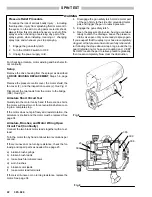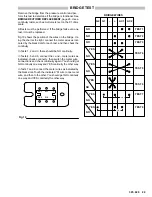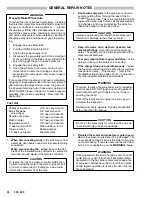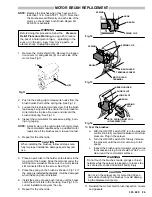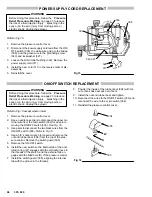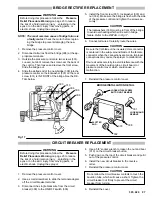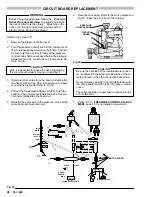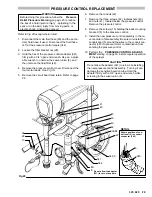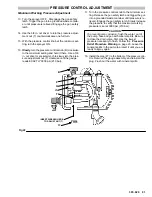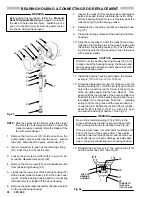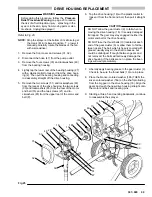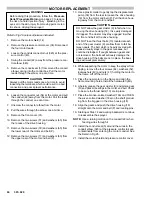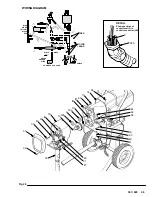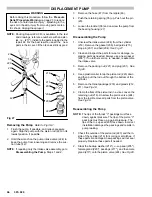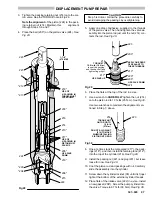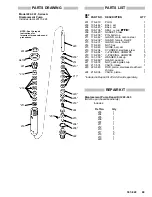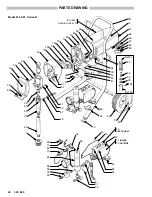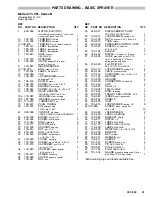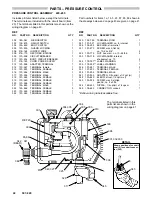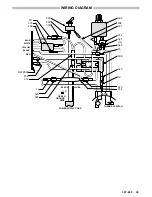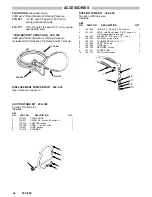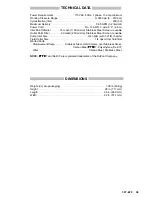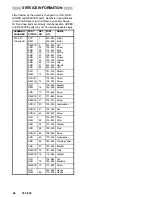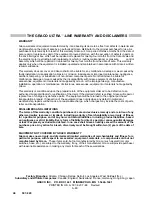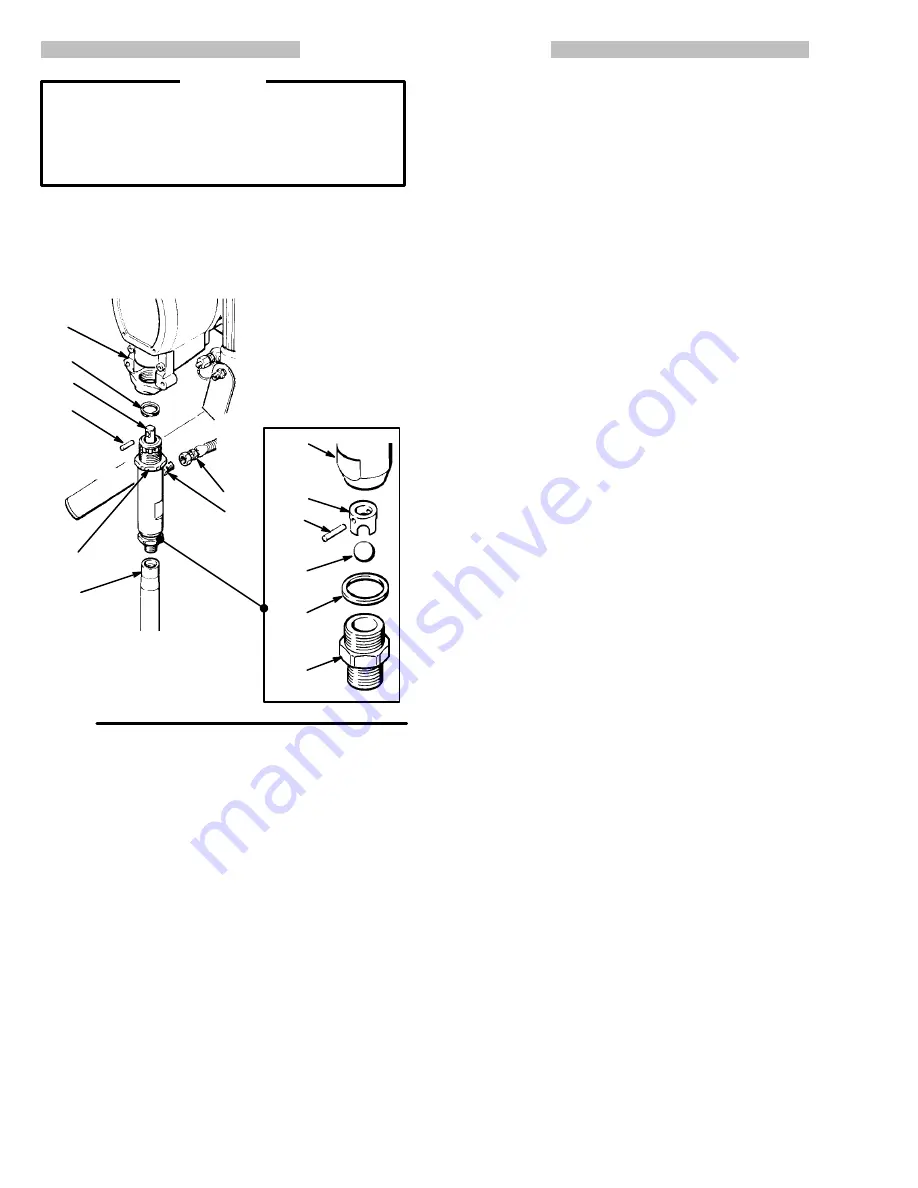
36
307–920
DISPLACEMENT PUMP
Before doing this procedure, follow the
Pressure
Relief Procedure Warning
on page 23 to reduce
the risk of a fluid injection injury , splashing in the
eyes or in the skin, injury from moving parts or elec-
tric shock.
Unplug the sprayer!
WARNING
NOTE:
Packing Repair 222–343 is available. In the text
and drawings, reference numbers with an aster-
isk, i.e., (211*), indicate the parts included in the
repair kit. For the best results, use all the new
parts in the kit, even if the old ones still look good.
Fig 27
42
47
46
35
20
27
38
223
216
215
207
206
222
*204
Removing the Pump
Refer to Fig 36–1.
1. Flush the pump, if possible, and relieve pressure
again. Stop the pump with the piston rod (223) in its
lowest position, if possible.
2. Hold the wrench on the pump intake valve (224) to
keep the pump from loosening and remove the suc-
tion tube (42).
NOTE
: If repairing only the intake valve assembly, go to
Disassembling the Pump
, Steps 1 and 2.
3. Remove the hose (47) from the nipple (46).
4. Push the retaining spring (35) up. Push out the pin
(20).
5. Loosen the locknut (38) and unscrew the pump from
the bearing housing (27).
Disassembling the Pump
1. Unscrew the intake valve (224) from the cylinder
(216). Remove the gasket (206), ball guide (215),
stop pin (207) and ball (204).
See Fig 27.
2. Clean and inspect the parts for wear or damage, re-
placing parts as needed. Always use a new gasket
(206*). If no further service is needed, reassemble
the intake valve.
3. Remove the packing nut (221) and plug (201).
See
Fig 28.
4. Use a plastic mallet to tap the piston rod (223) down,
and then pull the rod out through the bottom of the
cylinder.
5. Remove the throat packings (218) and glands (212,
211).
See Fig 28.
6. Clamp the flats of the piston rod in a vise. Loosen the
retaining nut (214). Unscrew the piston valve (224)
from the rod. Remove all parts from the piston valve.
See Fig 28.
Reassembling the Pump
NOTE:
The lips of the throat “V” packings must face
down, against pressure. The lips of the piston “V”
packings must face up, against pressure. The
lips of the U–cup seal (205) face down. Incorrect
installation damages the packings and results in
pump leaking.
1. Check the outside of the piston rod (223) and the in-
side of the cylinder (216) for scoring or scratches. If
these parts are damaged, new packings will not seal
properly. Replace these parts if needed.
2. Stack the backup washer (219*), u–cup seal (205*),
female gland (220*), packings (217*), and then male
gland (213*) onto the piston valve (224).
See Fig 28.
Summary of Contents for 231-081
Page 47: ...47 307 920...

